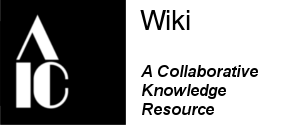Book scanner
Book scanners are designed to digitize the contents of fragile, bound, or delicate books rather than the book as an object itself. The rig is usually characterized by a dual camera system that allows it to capture the right and left page at the same time, and a V-shaped cradle that ensures correct support during digitization; the opening angle ranges between 90° and 120°, reducing risk of damage to the binding and to the spine.
The V-shaped cradle is generally adjustable in height, allowing the position of the book to be changed and maintain the pages at a consistent distance to the sensor. A glass plate, also V-shaped, helps keep the pages flat and functions as an indicator of optimal height for the capture. When present in the scanning system, lasers are also used to indicate the right position of the page.
Other models exploit a low-pressure suction system for holding the books’ pages while scanning.[1]
Built-in lighting can be found on certain models. While on one side it may be convenient, this may pose limitations in the adjustability and potentially cause unevenness in the illumination. Also the glass plate influences the color rendering. These factors should be taken into consideration when determining the desired benchmark beforehand and during the calibration.
In single camera systems, the digitization process needs to be repeated, thereby doubling the strain on the object.
References[edit | edit source]
- ↑ McFarlin Library. 2025. “McFarlin’s New ScanRobot Protects Rare Books While Increasing Access for Students, Scholars.” The University of Tulsa. March 26, 2025.
| Browse by category | Community resources | Contributors' resources | Editors' shortcuts |
|---|---|---|---|
|
Community Portal |

